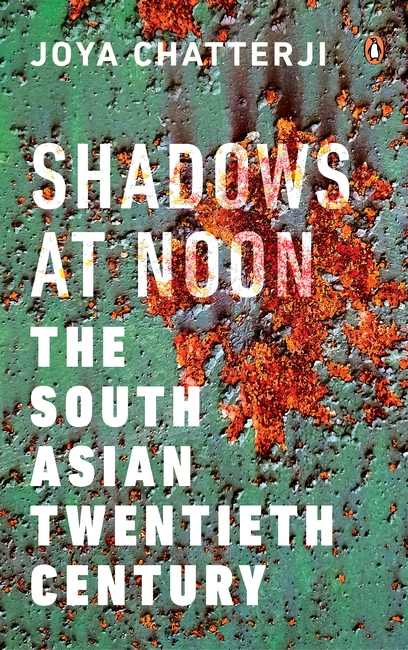
views
Apart from gratuitously misrepresenting preeminent issues, Joya Chatterji puts forward serial colonial tropes about India without any authorial misgivings. The unhesitant legitimacy she accords to Dravidianism and the highly suspect EV Ramaswamy Naicker, the virulent slanderer of Hindus is straight out of the colonial playbook. Naicker did not want British rule to end and both Nehru and Ambedkar thought him fit for imprisonment. British policies created irresistible societal changes in Tamil status and identity and instituted deep societal fissures by forcing Brahmins into public service and the professions, in turn, prompting a backward caste backlash against their dominance in them.
JC also repeats tired conventional certitudes about partition without recognising that although Muslims were indeed mobilised overwhelmingly in its favour by Jinnah and prominent clerics, the creation of Pakistan was ultimately a paramount British imperialist goal, pursued determinedly by the colonial office in London. A succession of Viceroys and British statesmen of all political hues used Mohammed Ali Jinnah to achieve British strategic aims in north-western India by establishing Pakistan. The Congress party, accused of being a Hindu movement, would not have facilitated these British aims in an undivided independent India.
Much evidence of the cynical British conspiracy and an extremely bloody partition, highly convenient to the colonial administration, lies undisclosed at Southampton University. It holds the Mountbatten diaries for which the British government successfully fought an expensive High Court battle recently in London to deny access to the public. Lord Mountbatten had been warned repeatedly by his own senior official of the impending bloodletting on the eve of partition he but looked the other way. However, he and his wife Lady Edwina were to remain Jawaharlal Nehru’s valued friends and Lord Mountbatten was invited to remain as Governor General of India, adding insult to injury.
This makes irrelevant JC’s unwavering contention about the failure of a compromise owing to an increasingly divided and secularised Congress, which had sought a sense of belonging to the nation to override communal identities. The alleged subversion of the possibility of a compromise between Hindus and Muslims by a supposed Hindu right wing, comprising Sardar Patel, Madan Mohan Malviya and Rajendra Prasad, has been demolished by historian Venkat Dhulipala in an amply footnoted published article. Her heartfelt sensitivity towards the irrefutably sectarian Mohammed Iqbal and Mohammed Ali Jinnah, whom Joya Chatterji admires to some excess for his alleged liberalism and pragmatism, is revealing. She misses no opportunity to show him in a luminous light, comparing him, in one stray comment, to the exceptional Hindu reformer, Mukund Ramrao Jayaker, the first VC of Pune University although Ishtiaq Ahmed has provided chapter and verse on Jinnah’s vindictive Jihadi instincts (p. 468). This kind of indefensible outlook is also proffered by Ayesha Jalal, another former supervisee of JC’s husband, Anil Seal, the disparager of India’s independence struggles.
The global anti-Indian historian’s ecosystem embraced Ayesha Jalal’s appallingly parochial scholarship on India’s partition although it has now been debunked thoroughly by Ishtiaq Ahmed’s recent research and the path-breaking work of historian Venkat Dhulipala. But JC persists with equating India and Pakistan and the alleged similarity of the goals of Nehru and Jinnah, although one was the principal cause of the unprecedented bloodshed of partition. In stark contrast, Nehru had sought to submerge communal differences in a sense of common fate and shared goals to overcome India’s parlous economic predicament under exploitative colonial rule. JC has a bee in her proverbial bonnet about Nehru and Jinnah being liberals and alike in their politics and personalities. In 1946, the implacably Islamist Jinnah and his Muslim League had bloodcurdlingly threatened to unleash the horrors of Timur and Nadir Shah on Hindus if their demand for partition was not conceded. There is no record of such abominable sentiments of Nehru and only Jinnah and his successors sought to impose a single language on their people because the role of English has remained unchallenged in India.
JC is outraged by the Evacuee Property Ordinance of 1949 and indignant that Jinnah’s Malabar Hill property was not restored to him, an indication of her intellectual migration to another planetary orbit and failure to grasp the enormity which had taken place in August 1947. Furthermore, Joya Chatterji’s endorsement of weighted communal electoral representation shows little cognition that such an alternative, in the context of India’s independence, would have entailed an abandonment of democratic constitutional governance. It would have sponsored instead a divisive confessionalism and an institutionalisation of communal loyalties that would eventually descend into civil war. The fruits of such willful political caprice are there to be seen in contemporary Lebanon.
JC’s observations on the culpability for Calcutta’s communal violence during the 1940s, by eagerly naming Hindu leaders, is motivated by a desire to obscure the preeminent role of Muhammed Ali Jinnah and Huseyn Shaheed Suhrawardy, the butcher of Bengal. This communal violence, initiated by Muslims, followed by Hindu retaliation, was intended to convince doubters in London that without partition, uncontrolled bloodshed would result. The researcher she cites on partition has provided a highly partisan account of events too, typical of the fraudulent Left-wing Bengali intelligentsia seeking greener pastures abroad, by peddling ideological stereotypes about India, required by Western chancelleries. Neither JC nor the researcher found it politic to mention that the bodies of naked Hindu women were hung from meat hooks in north Calcutta after the violence was openly facilitated by the Prime Minister of Bengal, Suhrawardy, with ample quantities of weapons and bombs supplied to the rioters after a massive public meeting.
JC’s importunate hand-wringing on behalf of Muslims who fled India and are not being allowed to return is a truly jarring contrast to her apparent insouciance about what happened to the Hindus of East Pakistan. The worst sufferers of one-sided atrocities were Bengali Hindus, though major retaliation against Muslims occurred in Bihar. A million Bengali Hindus had been slaughtered in East Pakistan by 1950, in response to which Nehru cynically provided Pakistan political cover by signing the shameful Liaquat-Nehru pact. It prompted the resignation of his two Bengali Cabinet Ministers, Syama Prasad Mookerjee and K.C. Neogy. Mookerjee himself was cynically and calculatedly done to death by Sheikh Abdullah in 1953. Mookerjee’s mother, the widow of the renowned Calcutta University VC, Ashutosh Mukherjee, blamed his death on none other than Jawaharlal Nehru. So much for the liberal duo, Jinnah and Nehru, of JC’s ideological blinkers though Cambridge’s Left liberal Indologists possibly suffer dyscalculia, unable or unwilling to grasp the sheer scale of the horrors Hindus in East Pakistan suffered in the aftermath of partition. Their unending saga of death, destruction and, of course, the Muslim speciality of abducting Kafir womenfolk continues unabated.
In one ghastly episode in October 1946, Gholam Sarwar’s Mayur Fauj presented the severed head of the President of the Noakhali Bar Association, Rajendra Lal Roy, to him. Roy’s two teenage daughters were taken as booty by the leaders of the assault in their home. Village after village was forcibly converted, Hindu men forced to wear skullcaps and grow beards, women stripped of their shankha and sindur, and forced to recite the Kalma. The most prominent Muslim leader of Noakhali had earlier made an incendiary speech in which he significantly singled out Hindu women by saying they were ‘light-skinned and pretty’ because they ate quality food produced by penurious Muslims, pointedly stipulating them as primacy targets. Ten months later, in the aftermath of partition, Hindu women in East Pakistan were being abducted for the night from their homes by Muslim gangs. Elsewhere, Hindu women in captivity fell on their knees, begging to be rescued if they had an opportunity to plead in private, with members of the official visiting committee. None of this is apparently worthy of the attention of perfumed High Table Cambridge School legatees, mute apologists for the horrors inflicted on hundreds of thousands of helpless Hindu Bengalis and their hapless womenfolk.

JC’s unfathomable urge to engage in apologia for Muslims gets the better of her again and again and she shockingly describes the rape of women kidnapped during partition merely as ‘consummation’, consensual by implication (p. 401). This was the fate of Bengali Hindu women in East Pakistan repeatedly and in Bangladesh subsequently and persists to this day. It is worth reminding readers of the plaintive exclamation of a Bangladeshi Muslim woman who bewailed that the greatest curse for them was to be pretty. At the same time, JC remains insupportably forbearing of interfaith marriages, which largely means ‘liaisons’ between Hindu women and Muslim men. There is now a growing body of disquieting evidence and criminal prosecutions that Hindu women are frequently victims of instrumental capture, in what has come to be known as “love jihad”.
Joya Chatterji also makes outlandish claims about measures allegedly demanded by the Hindus against Muslims remaining in India, in the aftermath of partition, ignoring the high emotions its carnage had provoked across the country. Most important of all, instead of any unjust punitive measures, everything was done to reassure Muslims. This is a process that continues to this day, with swingeing legislative favours for Muslims. They are also disproportionate beneficiaries of various government welfare schemes under the allegedly Hindu nationalist government of Narendra Modi. By contrast, the Noakhali genocide and murder of a million Hindus in East Pakistan by 1950 is nowhere discussed, nor is the predicted extinction in Bangladesh of Hindu and other minority populations by 2050, although they were more than a third of the country in 1947. India’s Muslim population only grows and Hindus, Sikhs and Christians continue to flee Pakistan and Bangladesh. By contrast, India’s Muslims are not seeking refuge in the neighbouring Islamic Republics.
JC also accuses Syama Prasad Mookerjee of proposing an invasion of Pakistan, which is an unabashed half-truth. In fact, both Mookerjee and Sardar Patel, a particular bête noire of Joya Chatterji, had demanded the establishment of safe areas for Hindus in East Pakistan and subsequently suggested military intervention to stop their mass murder in it. The events prompted the duplicitous Liaquat-Nehru Pact mentioned earlier. This is not an outrage that apparently agitates JC. She also describes the invasion of J&K by Pakistani tribesmen and army regulars as a ‘brief and contained’ war when its horrors, especially for abducted women, were to be burned into popular Kashmiri memory. These Kashmiri memories were the real reason why one Pakistani Prime Minister, Mohammed Ali, declined Nehru’s offer of a J&K plebiscite in 1954, fearing trouncing, even according to another apologist of Pakistan, historian Alistair Lamb.
The assassination of MK Gandhi, who had become politically irrelevant by 1947, with hardly anyone paying attention to him, turned him into an eternal martyr. Gandhi’s funeral reinforced the legitimacy of the Congress party and endorsed Nehru’s hitherto less than unequivocal claim to primacy as the supreme political leader. The catalyst for Gandhi’s murder was his final act of blackmail against Hindus, threatening to fast unto death if India did not immediately hand over to Pakistan its share of India’s foreign exchange reserves. What Joya Chatterji avoids mentioning is that Nehru also opposed handing over the amounts due because he warned Pakistan would immediately use the foreign exchange to purchase arms for its ongoing invasion of J&K. That is indeed what duly happened. But the self-indulgent criminality of assassin Nathuram Godse ended the prospect of any onset of a genuine Hindu socio-cultural renaissance in India.
Instead, it firmly embedded an inflammatory politics of Muslim appeasement in India’s political culture. This appeasement has included politicians hampering the investigation of impending acts of terrorism by security agencies and questioning their integrity. The President of Congress, Nehru’s Italian granddaughter-in-law, notoriously confessed to weeping when terrorists were killed in the Batla House police encounter, though not for the martyred police officer. Yet, JC continues to harp on threats posed to Indian Muslims by a mythical Hindu Right and airily derides Sardar Patel’s immense achievement of peacefully integrating India’s princely states into the Indian Union as signifying ‘browbeating and dragooning’.
However, JC does get something right, perhaps inadvertently, which is to underline Nehru’s own chosen role, above all else, as the champion of India’s sectarian Islam. He had even threatened to abandon politics and commit himself to relief work in a Muslim refugee camp if Sardar Vallabhbhai Patel and Syama Prasad Mookerjee insisted on armed action to save Hindus in East Pakistan. A ridiculous anecdote about kindness to an ironing lady in the Kashmiri Sir Tej Bahadur Sapru household, who had burnt an expensive saree, is quoted as evidence of civility, with imputed Mughlai courtly echoes, of the highly cultured Sapru-Nehru clan (p.91). This indefinable civility possibly accounts for the revelation in his selected works that Prime Minister Nehru discussed Indian defence policy and strategy with his girlfriend, Lady Edwina Mountbatten, right up to her death.
It is also in Bangladesh that pogroms against Hindus continue unabated to this day. JC equates reprisals against Razakaars for enthusiastic participation in horrendous crimes of 1971, as collaborators in the Pakistani army’s slaughter, with the murder of millions during the genocide itself. JC laments, at some length, the fate of Razakaar killers, who were subsequently held in camps around Dhaka after Pakistan refused to accept them. Instead, large numbers of them were subsequently allowed to enter West Bengal as a potential Islamo-communist vote bank. They were furnished illegal citizenship papers by India’s communists, the CPI(M), which then governed West Bengal, no doubt her ideological comrades. Equally outrageous is Joya Chatterji’s obnoxious lament at the removal of the Nizam of Hyderabad in Operation Polo and mourning for the murderous Hyderabadi Razakaars eliminated during it. This piece of malicious falsification is poised for shredding by a manifestly superior historian, who has sifted through a mountain of evidence regarding the evil ruler and the history of the statelet.
The longstanding Anglo-American hope of installing some sort of vassal administration in New Delhi still views Indian Muslims as their essential key allies to achieve it, a ploy originally formulated in the nineteenth century, after the revolt of 1857, by the truculently sectarian Sir Syed Ahmed Khan. In addition, contemporary Anglo-American strategy incites assorted Indian criminalized caste political parties to inflame political divisions in India. Among the expedients deployed is unswerving patronage of academic research on caste issues to help sustain a broadened alliance, intellectually and politically, against Indian sovereignty. But at some point, JC does make a revealing comment about early twentieth-century colonial policies: “The ‘communities’ in twentieth-century India – not only ‘Muslims’ but others that have since emerged – are best understood as modern political coalitions created in this period” (p. 79).
However, JC’s apparent casual commendation of the Pasmanda Mahaz Muslim demand for inclusion as caste reservation beneficiaries, along with Dalits, amounts to an ominous abetment of the final annihilation of Hindu society (p. 560). Such demands have long been the staple of sustained incitement, ultimately by Western intelligence agencies. They have sponsored political activism in its favour in India through their global evangelical assets and broader advocacy has been undertaken by conniving academics abroad (Cf. Phillip Jenkins, The Next Christendom, OUP, 2007). Today, Oxbridge remains the principal hub of anti-Indian politics in the United Kingdom, often supported by Indian largesse, both official and private.
The Anglo-American conspiracy to perpetuate sectarian religious identities is designed to embed a compliant political constituency in India, as highlighted by the protests against the Kudankulam nuclear power plant by Christian front organisations on instructions, revealed by WikiLeaks, from the US consulate in Mumbai. The strategy is well thought out and has reached a crescendo in recent years in the Anglosphere. The politically motivated legal proscription of non-existent alleged caste discrimination abroad is the first step towards introducing comparable caste clauses in international organisations. They will then cite equality provisions in their charters to demand the extension of reservation quotas to all in India, i.e. non-Hindus. It will open the floodgates to religious conversion once the fear of losing reservation benefits, owing to abandoning Hinduism and its alleged discriminatory caste practices is eradicated in law, although that is happening covertly across India anyway.
Britain had held down India by force of arms, especially after 1857, spending more than 40 per cent of Indian revenues collected to suppress the people from whom it was extracted. Taxation under the Raj remained unwieldy and inconsistent and the burden on the cultivator was unbearable. This was a critical reason for devastating famines, but that didn’t unduly perturb the Raj, which was only exercised if serious discontent was precipitated and revolt threatened. Another crime in the nineteenth century that permanently scarred India was the decimation of a huge swathe of its forests and the extermination of wildlife as vermin, which also ruined the lives of India’s sizeable community of forest dwellers.
In the decades before its retreat, the malevolent colonial power also embarked on a devastating political and cultural scorched earth policy to divide and despoil India. Their perception of the situation on the ground had broadly paralleled that of India’s erstwhile Muslim rulers and the 1500 or so noble Muslim families that benefited from India’s prolonged military occupation. Yet, quite clearly, India had continued to revolt repeatedly, in some shape or form, against the prolonged foreign occupations. It was the British panic of succumbing to a fresh armed challenge in Bengal that eventually forced it to decamp in 1947.
The British policy of implanting virulent caste and regional identities has haunted the Indian subcontinent since independence. They have subsequently been used with great zeal globally by adversarial foreign powers to denounce the alleged innate racism of Hindu Brahminical casteism. Nevertheless, JC tellingly avers “the deceptively simple process of asking Indians who they were” for the purpose of counting them (‘What is your religion? What is your caste? What is your language?’) transformed the ways in which religious, caste and regional identities emerged and came to express themselves, and became major forces shaping the politics of the twentieth century. The census rubbed away granularity and forced people into large communal categories that, a century ago, had little meaning. Likewise, the fact that most Indians were bilingual would have been lost in censuses that allowed one person only one language (p.288-9). In the words of India’s pioneering anthropologist, caste censuses gave it “a life it did not have”.
India’s rule by mostly racist British ICS officers, who often hated being in India and Indians, only resulted in a futile attempt to supplant local custom and dispute resolution with an overarching framework of civil law and it all faltered miserably. It reduced Indians to deceitful and mistrusted supplicants and their frustrated British overlord became a superhuman, all-powerful overseer of hundreds of districts. But India provided them with the wealth they could not have dreamt of, in Britain, as the sons of modest clergy and even shopkeepers who had navigated the incomprehensibly misdirected exams to join the colonial ICS. To enable the British officer to exercise authority over the hapless Indian, “the late-colonial state developed an armoury of coercive techniques that went well beyond the rule of law, and indeed had little to do with it. Public flogging, collective fines upon villages, forced ‘flag marches’, crawling orders, firing on unarmed crowds and even aerial bombardment were illegal techniques by which the British ruled India” (p. 299). This is the past nostalgically recalled by some Indians and especially deracinated Bengalis, like Nirad Chaudhuri, despite their region suffering the most, directly and indirectly, in the hands of the British.
India was ruled by befuddled conquerors (like Babur who hated India, enjoining he be buried in Afghanistan) with egregious cruelty. Its unmanageable corollary had been Hindu India’s descent into a chaotic atomized societal form once the integrity of its socioeconomic coherence and long-established cultural norms of village self-governance and wider political hierarchy had been devastated by conquerors. The reasons for the comprehensive annihilation of Indian civilisation are not far to seek. It was the consequence of the overriding interest of both the British and Muslim conquerors to extract the maximum taxes, which entailed maintaining their rule through tremendous brutality. JC portrays with some realism the daily experience of British rule and the role of Indian intermediaries, representing local British authority, and the complex sociocultural context of their relations with ordinary villagers. The distaste of the white British official for the ensuing administrative situation and its underpinning by harshness are underlined.
Such was the callousness of British rule that the thirty million famine-recorded deaths in the 26 years before 1902 are only an estimate. As a result, the hunger suffered by many, especially Dalits at the bottom of the pile, even after forty years of Indian independence is heartrending. Yet, some situational context of the historical frequency of famines and the norm of hunger was necessary to avoid implying unjust condemnation of independent India and its efforts to tackle the evil of hunger (p.555). The inhumane reality had not been much better for indentured nineteenth and twentieth-century Indian labour abroad. Their experience was little short of modern slavery despite the deceitful British pretence of abolishing it.
JC’s ample recognition of callous colonial realities is at odds with her persistent hostility towards the complex societal longings of independent India, its overwhelmingly Hindu culture and its practice of statehood in order to endure as a sovereign polity.
To be continued
The writer taught international political economy for more than two decades at the London School of Economics and Political Science. Views expressed in the above piece are personal and solely that of the author. They do not necessarily reflect News18’s views.


















Comments
0 comment